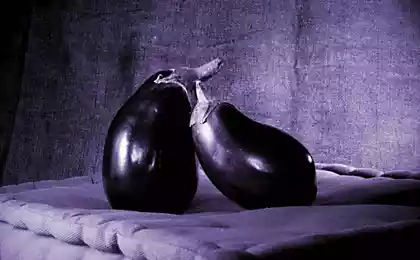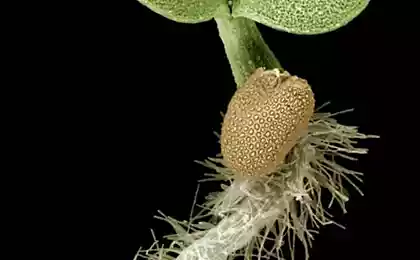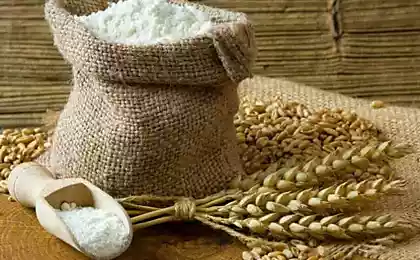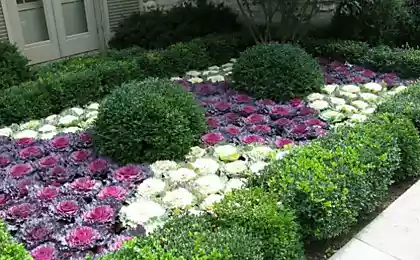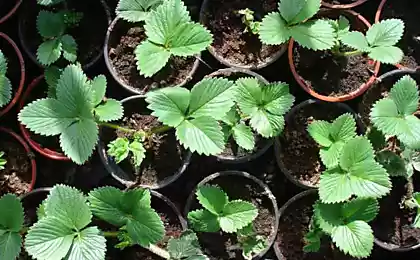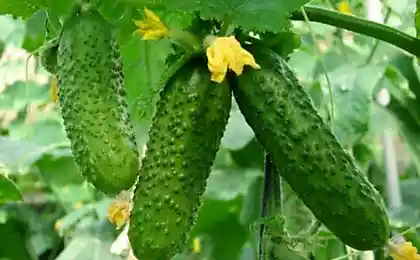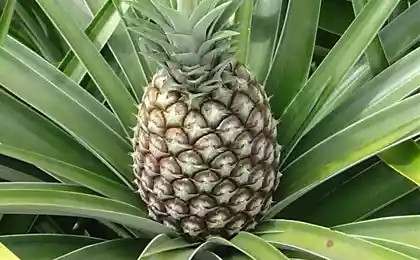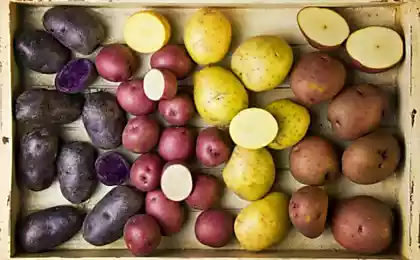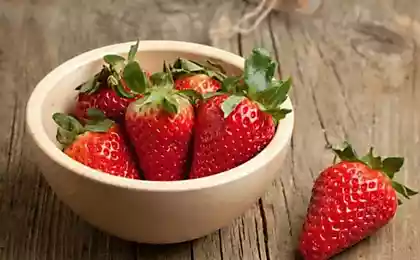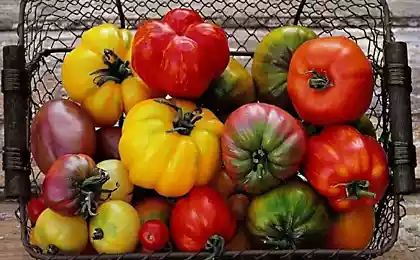612
Perennial daisies: varieties, cultivation and care

Perennial Daisy — star of the first plan. Colorful stripe she emphasizes the geometry of flowerbeds, carpet is spread along the garden paths, while holding a border with lawn and generous pouring of paint before more of tall garden flowers.
It is a perennial plant 10-30 cm tall with a basal rosette of spatulate leaves and a bouquet of "daisies" on short leafless stalks. Widely practiced growing daisies from seeds in the biennial culture. Inflorescence basket. The large outer "petals" are ray flat or tubular flowers. The center of the basket — Golden-yellow disk — consists of small tubular flowers. The structure of the basket is the basis of dividing varieties into ligulate and tubular, which, in turn, are divided into double, semi-double and simple.

Daisy was among the first wildflowers, paving the way to the gardens. Already in the XVI century there was the double varieties are not only white but also red.

Daisy — the perfect companion for tulips, daffodils and other spring bulbs.

The cultivation and care
Place to daisies, choose the sun, because of the generous flowering requires good lighting. Will suit any garden soil, of course, if it is sufficiently cultivated handling and making compost. At the same time as the daisies are sensitive to uniform to ensure the moisture, they prefer light, structured loams.
Excess moisture is perhaps even more dangerous than its lack. In low areas where stagnant melt and rain water, these plants can fall out. So drainage is important.
Daisy hardy. To ride out the cold, going completely under the snow, helping them including their small "growth". But where they are planted on a hill, for example on the slide, and where the winter blows the snow, it is advisable light cover oak leaves or spruce branches.
Caring for daisies
Daisy surprisingly unpretentious, can survive drought and other adverse conditions. Bright proof — blooming, half-wild lawns, spectacular mass of tiny "daisies". Here the daisies never gets any maintenance, if only the lawn was green. Perhaps the only exception is "at one" with the grass cutting cut and faded baskets of daisies. That's all care! And daisies bloom even louder! At the same time in close company with lawn grasses daisies are never as good as, say, a border around flower beds, where they as caring for garden flowers — weed, on time, watered and fed.

On the lawn they differ little from their wild relatives in the mountain meadows of the Crimea and the Caucasus. Only at high soil fertility varietal dignity fully revealed, and the plants bloom for a long time. So spring is not too lazy to feed Daisy a balanced flower fertilizer, and during flowering, do not allow plants to tie seeds — tsepinite aging baskets. For plants this can be a signal that the attempt to breed has failed and need to repeat that, naturally, considerably lengthens the flowering period.
The absence of proper care and due to this common phenomenon as a "degeneration" of the variety. Bought the Daisy flower large and double, a couple of years the former beauty is not in sight — kurcinka has grown, sockets sitting closely, and the flowers are crushed. Everyone knows that perennials should be divided and transplanted. But if other garden flowers can wait 4-5 years, then Daisy better to divide and transplant every year or at least every two years. Lesson troublesome, but the only way you will achieve full flowering from year to year without loss of decorative qualities.
Spectacular garden
The scientific name of Daisy perennial Bellis perennis is translated as "the perfect perennial". In the XVII century appeared two tone daisies with petals speckled and stripes, red on top and white — bottom. In Italy, there were derived varieties with pointed baskets from tubular flowers. Daisy-buttons with small pompon baskets ‘Pomponette’ gave us France. In our days the range of colors enriched with rich dark red and salmon-pink tones.

There are varieties of the baby, such as ‘Dresden China’, ‘Liliput’, ‘Alice’, and varieties of giants as ‘Habanera’.

At the curious varieties 'Prolifera', also known as 'Hens and Chickens' — "Hen with chickens", the Central basket acquires a "halo" of small baskets of the second order, like a hen surrounded by Chicks. (Depending on the length of the stems of this floral wonder is like a graceful wreath of separate mini-daisies on the basket-"mother" or one, but big and shaggy plush Daisy.) The daisies phenomenon of proliferation — germination of inflorescences has attracted attention already in the XVI century, and recorded in the illustrations of old gardening encyclopedias. Surprisingly, variety has survived to the present day, although now this rarity is grown rather for fun.
There are daisies and unusual leaves — ‘Aucubaefolia’ with yellow splashes on the leaves, as plants of aucuba, and ‘Shrewley Gold’ with bright Golden-yellow pattern along the veins.
The best varieties of perennial daisies
The Originator Benary:
The Series ‘Habanera’
Terry baskets expect on the record: the diameter is 6 cm or more! Attractive feature: the baskets are less dense than other double varieties, and seems slightly laced due to slightly curved "petals". Height 15 cm Colors: white, pink, red, white with red tips.
‘Robella’
Dark-double baskets with a diameter of 4-5 cm, a unique salmon-pink color. Height 12-18 cm gold medal "Fireselect".
The Series ‘Speedstar’
Baskets are semi-double with bright yellow disk, especially expressive in the variety with Carmine flowers coloring. Blooms without vernalization, that is, in the year of sowing, not requiring a cold (winter) period of rest. Colors: Carmine, pink, white. Have rozovocvetkovyh baskets disc surrounded by a white halo. Height 13 cm
The Series ‘Rominette’
Small dark-double baskets with a diameter of 2 cm Color: white, pink, Carmine pink, red. Height 12-15 cm
The Series ‘Tasso’
Basket of tubular flowers, dark-double, extremely dense, 4 cm in diameter, pompon type on short sturdy stems — a modern improved version of the old varieties ‘Pomponette’:
- ‘Tasso® Dunkelrosa’, color: red
- ‘Tasso® Erdbeersahne’, color salmon pink
- ‘Tasso® Hellrosa’, pink
- ‘Tasso® Red’, red
- ‘Tasso® WeiB’, white
- The cultivar ‘Tasso Strawberries & Cream’, a light pink with a darker center.

The Originator Floragran:
‘Belladaisy’
New award-winning "Fleroselekt". Baskets Terry with a diameter of 2-2,5 cm, colour hot pink. Height 10 cm Different early flowering, vyravnennomu habitus and stable color baskets. From sowing to flowering and 70-120 days, depending on sowing time.
The Originator Kieft Seed:
The Series ‘Bellissima’
Baskets pompon type double, diameter 4.5 cm, Height 12 cm or more. An early variety, does not require vernalization, blooms in the first year. Colors: red, pink, pink two tone with darker center, white.

Weed or find for the lazy?
In nature, daisies growing among low grasses in wet meadows and forest glades, so on a normal pitch they feel at home. Outlet so pressed to the ground that the lawn mower cuts off only long stems, not affecting leaves. Due to this feature, Daisy has gained fame not only valuable garden flower, but trudnoiskorenyaemyh weed of lawns. In England, where the simple Daisy is part of mother nature, to her constant presence on lawns, so used that even referred to as lawn Daisy.

However, if on the front lawn, these flowers really not a place for low maintenance gardens, charming weed — this is a good find. Not accidentally include Daisy in grass mixtures to create a Moorish lawns. Moreover, on the lawn, it will not leave the place until, until you will periodically mow the grass. From year to year the lawn will be the time to become in the wonderful flowery meadow. If you just throw it and let the grass grow to full height, then Daisy will gradually disappear. To survive in the dense sod of trimmed lawn can only simple daisies. Dark-double varieties to maintain their properties in need of nurturing care.published
P. S. And remember, only by changing their consumption — together we change the world! ©
Source: www.7dach.ru
All about lavender + lavender ice cream recipe delicious
Unique residential residence inside of a green hill


